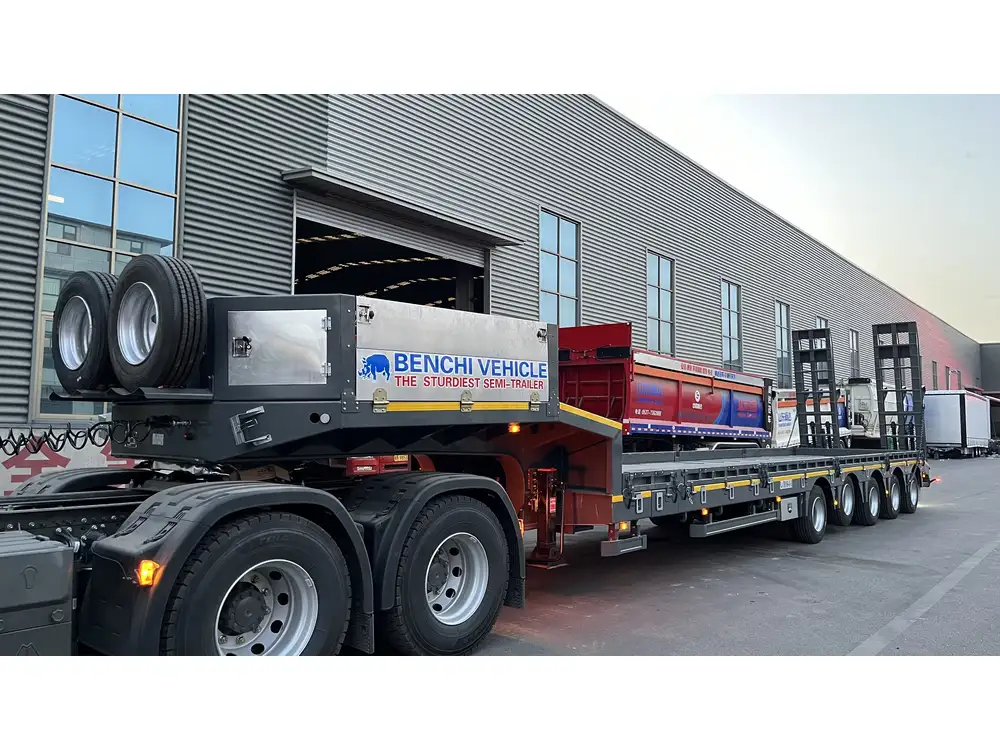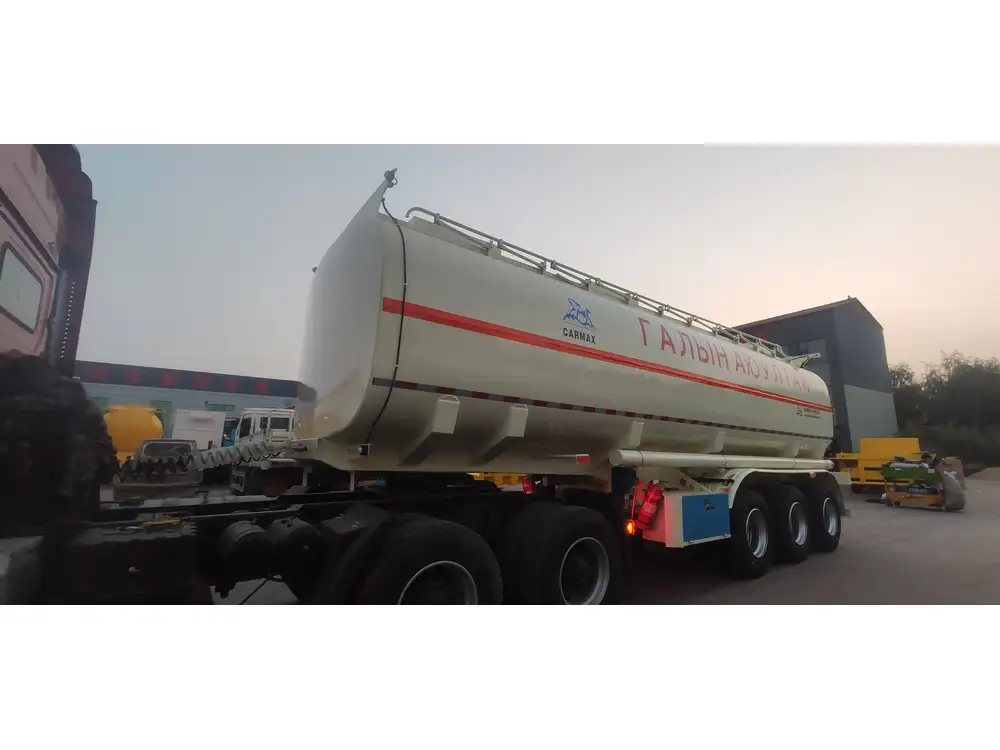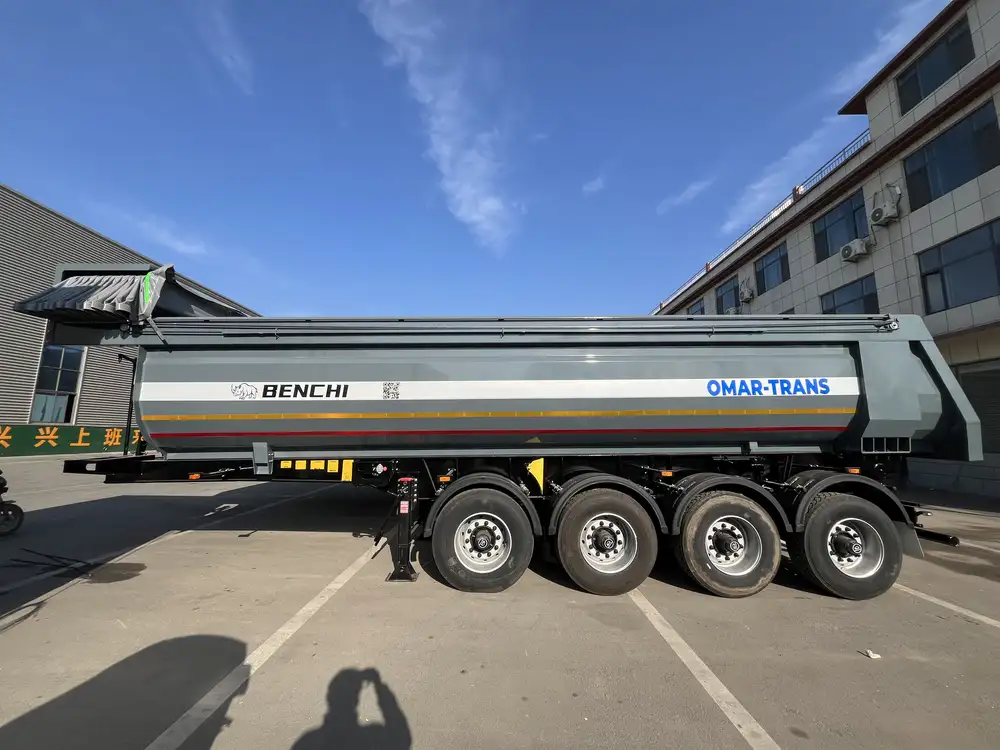Creating a hydraulic dump trailer is an ambitious yet highly rewarding project that can enhance your hauling efficiency and convenience. In this guide, we will walk you step-by-step through the intricate process of manufacturing a quality hydraulic dump trailer. We’ll cover everything from the planning phase and materials selection to assembly and safety considerations. Prepare to embark on a journey that empowers you with the knowledge you need to create a robust hydraulic dump trailer tailored to your specific needs.
Table of Contents
- Understanding Hydraulic Dump Trailers
- Materials and Components Required
- Planning Your Hydraulic Dump Trailer
- Step-by-Step Construction Process
- Testing Your Hydraulic Dump Trailer
- Safety Considerations
- Maintenance Tips
- Conclusion
Understanding Hydraulic Dump Trailers
Hydraulic dump trailers are specialized vehicles designed for transporting loose materials such as gravel, sand, and debris. Their unique mechanism allows the trailer bed to lift and unload its cargo with precision, significantly reducing manual labor. Understanding how these trailers work is vital for successful construction. At its core lies a hydraulic system that converts hydraulic energy into mechanical energy, providing the lifting capacity needed to elevate the bed and facilitate efficient dumping.

Materials and Components Required
Chassis Material Selection
The chassis of the trailer must be both durable and lightweight. Common materials include steel and aluminum. Here’s a brief comparison:
| Material | Advantages | Disadvantages |
|---|---|---|
| Steel | High strength, cost-effective | Heavier, prone to rust |
| Aluminum | Lightweight, resistant to rust | More expensive, less rigid |
Hydraulic System Parts
The hydraulic system comprises essential components, including:
- Hydraulic Pump: Converts mechanical energy to hydraulic energy.
- Hydraulic Cylinders: Facilitate the lifting and lowering of the trailer bed.
- Hydraulic Hoses: Transport fluid between the pump and cylinders.
- Fluid Reservoir: Stores hydraulic fluid.

Electrical Components
An efficient electrical system is necessary for operating the hydraulic system. Key components include:
- Battery: Provides energy to the hydraulic pump.
- Wiring: Connects the pump and controls.
- Control Switches: Allows for effortless operation of the hydraulic system.
Planning Your Hydraulic Dump Trailer
Before rushing headlong into construction, thorough planning is crucial. Determine the following:
- Purpose and Capacity: Define what materials you’ll haul and the required capacity.
- Dimensions: Calculate the ideal dimensions for your trailer, keeping within road regulations.
- Design Features: Decide on additional features like ramps for loading or specialized paint to prevent corrosion.
Step-by-Step Construction Process

Building the Chassis
Cut the Steel or Aluminum: Using a plasma cutter or metal saw, cut the metal sheets and beams according to your design specifications.
Weld the Frame: Assemble the chassis by welding together the pieces to form a rectangular base. Ensure all joints are secure and aligned.
Add Cross Members: Reinforce the chassis by adding cross members to support the dump bed and distribute weight evenly.
Installing the Hydraulic System
Mount the Hydraulic Pump: Securely attach the hydraulic pump to the chassis, ensuring easy access for maintenance.
Install Hydraulic Cylinders: Position the cylinders along the trailer’s underside, connecting them to the dump bed at the pivot points.
Connect Hoses: Attach the hydraulic hoses to both the pump and the cylinders, ensuring tight seals to prevent leaks. Use high-performance hydraulic fluid that suits your systems.
Wiring the Electrical Components
Connect the Battery: Secure the battery holder to the chassis and connect the positive and negative leads.
Install Control Switches: Mount the control switches in an accessible location, preferably near the trailer’s rear or the vehicle cabin.
Test Connectivity: Before finalizing the wiring, verify that all connections are secure and insulated to prevent short circuits.

Adding the Dump Bed
Attach the Dump Bed: Position the dump bed over the newly assembled chassis. Make sure it aligns seamlessly with the hydraulic cylinders.
Secure the Bed: Use heavy-duty bolts to lock the dump bed in position, ensuring that it can pivot freely for lifting.
Test the Lifting Mechanism: Operate the hydraulic system to confirm that the bed lifts and lowers smoothly without obstruction.
Testing Your Hydraulic Dump Trailer
Conduct a series of tests to ensure your trailer is functioning correctly. Perform the following checks:
Hydraulic Performance: Ensure the bed lifts to its maximum height and lowers without hesitation. Listen for any unusual noises that may indicate system malfunctions.
Weight Capacity: Gradually load the trailer with various materials but stay within the calculated weight limit to avoid damage.
Stability and Control: Test how the trailer behaves while in motion, ensuring that it distributes weight evenly and doesn’t sway when turning.
Safety Considerations
Safety should always be a priority when using and constructing a hydraulic dump trailer. Here are essential practices:
Wear Protective Gear: Always use safety goggles, gloves, and ear protection during construction and operation.
Regular Inspections: Conduct weekly inspections to check for leaks in the hydraulic system, loose bolts, and the integrity of electrical components.
Load Limits: Never exceed the recommended weight capacity to prevent accidents or mechanical failures.
Educate Users: Ensure everyone who operates the trailer understands its functions and safety protocols.

Maintenance Tips
Maintaining your hydraulic dump trailer will prolong its lifespan and enhance performance. Consider these maintenance practices:
Fluid Checks: Regularly inspect hydraulic fluid levels and top up as needed, replacing old fluid according to the manufacturer’s guidelines.
Inspect Hoses and Connections: Routinely check for any wear or leaks in hoses and connections, replacing them as necessary.
Wiring Inspections: Examine electrical wiring for signs of damage or fraying to prevent electrical failures.
Cleaning: Keep the chassis and dump bed clean to avoid rust formation and maintain the trailer’s structural integrity.
Conclusion
Constructing a hydraulic dump trailer is no small feat, yet the benefits of owning one—such as enhanced efficiency in transporting loose materials—are undoubtedly worth the effort. By diligently following this comprehensive guide, from carefully selecting materials to executing precise assembly techniques, you are well on your way to building a high-quality dump trailer tailored to your individual needs. Remember to adhere to safety standards and conduct regular maintenance, ensuring your trailer remains in optimal condition throughout its life. Your journey into the world of hydraulic dump trailers starts here—embrace it and enjoy the rewards of your hard work!



